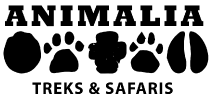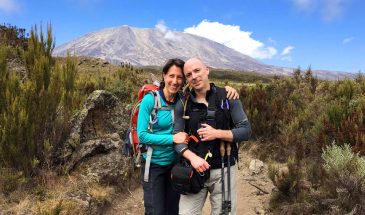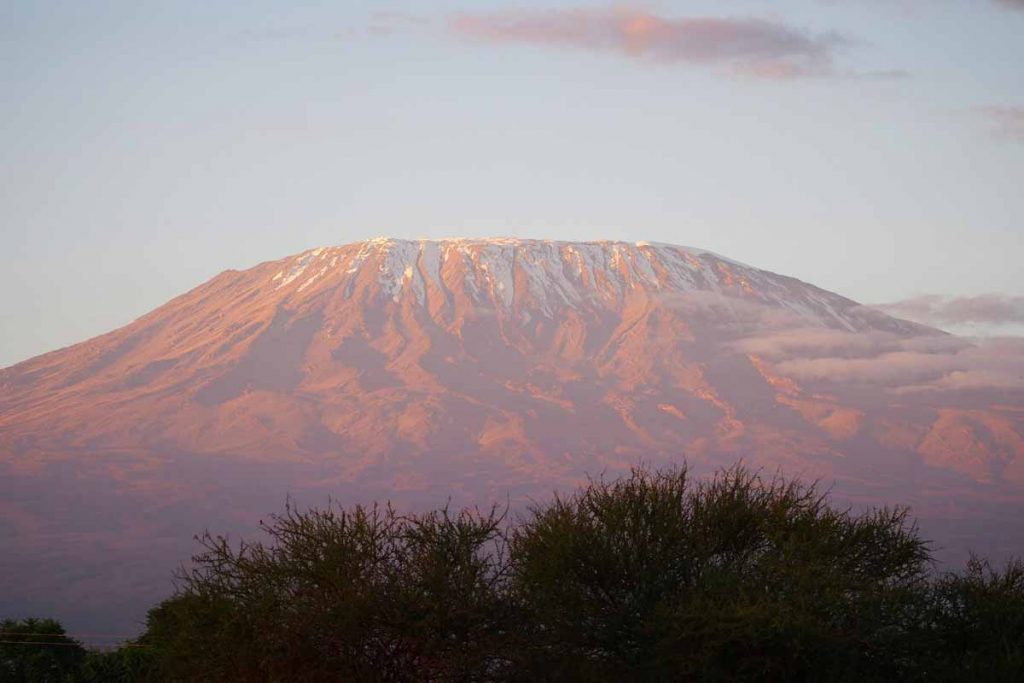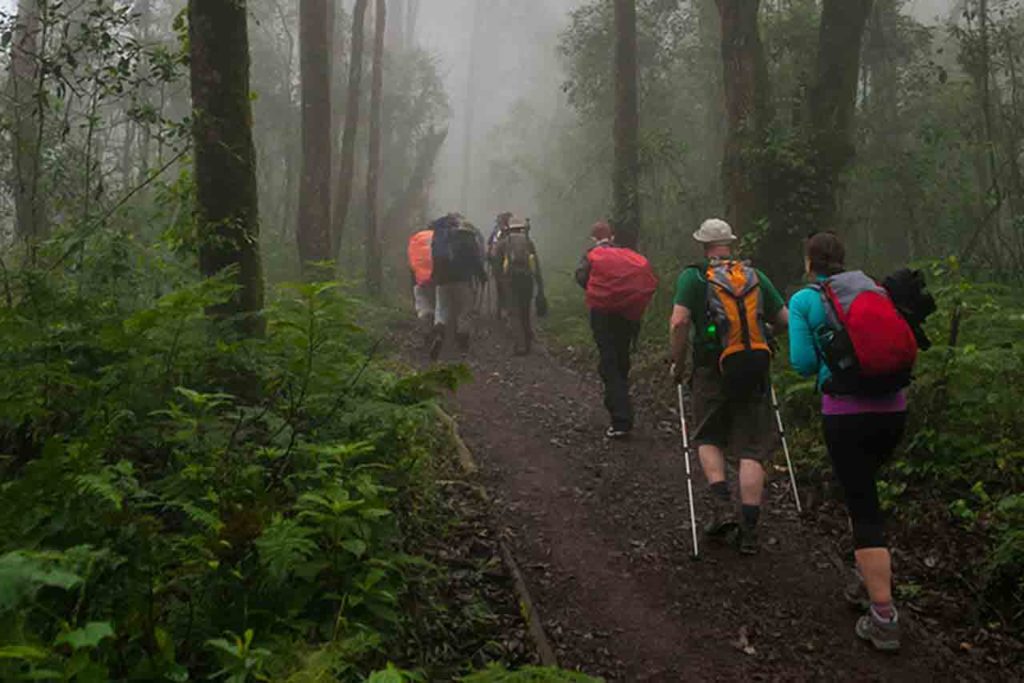- Overview
- Trip Outline
- Trip Includes
- Trip Excludes
- Gallery
- Booking
- FAQ
The Rongai route ascents Kilimanjaro from the north-eastern side of the mountain, along the border between Tanzania and Kenya. This route retains a sense of unspoiled wilderness and offers a different perspective on Kilimanjaro by approaching it from the north. The Rongai route’s premier advantage is that it is one of the quietest routes on the mountain. A disadvantage is the long travel time to the starting point of the route. The route also becomes busier when it connects with the Marangu route just before reaching Kibo hut. The Rongai route descends along the Marangu route as well, however you still sleep in tents, and do not use the A-frame huts of the Marangu route.
The Rongai route ascents Kilimanjaro from the north-eastern side of the mountain, along the border between Tanzania and Kenya. This route retains a sense of unspoiled wilderness and offers a different perspective on Kilimanjaro by approaching it from the north. The Rongai route’s premier advantage is that it is one of the quietest routes on the mountain. A disadvantage is the long travel time to the starting point of the route. The route also becomes busier when it connects with the Marangu route just before reaching Kibo hut. The Rongai route descends along the Marangu route as well, however you still sleep in tents, and do not use the A-frame huts of the Marangu route.
Itineraries
Arrival
Arrive in Tanzania
You will be picked up at the Kilimanjaro International Airport and transferred to your hotel in Moshi town; you will meet your guide who will brief you on your upcoming trek and do an equipment check to make sure you have all the necessary mountain gear. The missing gear can be rented on this day.
Overnight: at your Hotel in Moshi
Meals: Bed & Breakfast
Day 1
Nalemoru Gate (1990m) to Simba Camp (2625m)
This morning we will drive to the village of Nale Moru for the starting point of the Rongai route. The first stage of the trek is through farmland and pine forests. You may have chance to see the beautiful Colobus monkeys or if you’re lucky enough, elephants or buffalos en route. Our first camp will be the Simba Camp located at the edge of the moorland zone at 2625m.
Distance: 8 km Hiking
Time: 5 hours
Meals: Breakfast, Lunch and Dinner Included.
Day 2
Simba camp (2626m) – Kikelewa Camp (3679m)
We hike from Simba camp up towards Kibo till 3 482m for lunch at First Caves, a distance of 5.8km. After lunch we continue trekking until reaching Kikelewa Camp at about 3679 metres. The views start to open up and you begin to feel you’re on a really big mountain! Water can be found in a obvious stream below the cave, although you might have to wander downhill a way to find a pool or two. Enjoy dinner and overnight at Kikelewa camp.
Distance: 11.8 km Hiking
Time: 6-7 hours
Meals: Breakfast, Lunch and Dinner Included.
Day 3
Kikelewa Cave (3679m) – Mawenzi Tarn camp (4303m)
A short but steep climb up grassy slopes offers superb views of this wilderness area. The vegetation zone ends shortly before you reach your next camp at Mawenzi Tarn spectacularly situated beneath the towering spires of Mawenzi. Spend the afternoon acclimatizing and exploring the area.
Distance: 8 km Hiking
Time: 4 hours
Meals: Breakfast, Lunch and Dinner Included.
Day 4
Mawenzi Tarn camp (4303m) – Kibo hut (4730m)
After breakfast, hikers will continue ascending east for a half-day hike to Kibo Hut. Kibo is located in the “Saddle,” which refers to the area located between the peaks of Mawenzi and Kibo in an alpine desert. There is no water at this camp, but hikers can buy mineral water and soft drinks at the camp office. An early dinner will be served so hikers can rest before attempting the summit the same night. Your guide will brief you in detail on how to prepare for summit night. Get to sleep by 19:00!
Distance: 8 km Hiking
Time: 4-5 hours
Meals: Breakfast, Lunch and Dinner Included.
Day 5
Kibo hut (4730m) – Uhuru Peak (5895m) – Horombo hut (3705m)
You will rise around 23h20, and after some tea and biscuits you shuffle off into the night, and this is where the going really gets tough. The first section of the trail consists of a rocky path to the Hans Meyer Cave (5150m), also a good resting spot.
The path then zigzags up to Gillman’s point (5 681m), which is located on the crater rim. This section is very steep with a lot of stone scree, requiring a great physical and mental effort. This is probably the most demanding section of the entire route. Do the Kili shuffle and move slowly. From Gillmans Point you will normally encounter snow all the way up to Uhuru peak (5895m), the highest point in Africa.
Total exhilaration and satisfaction – you made it
Weather conditions on the summit will determine how long you will be able to spend, taking photographs, before the 3 hour descent back to Kibo hut. After a short rest at Kibo hot, you gather all your gear you left behind for the ascent and head down to Horombo hut (3 hours) for your overnight. The return to Horombo hut will seem surprisingly fast compared to the ascent. The total time spent walking on this day is around 14 hours, so be prepared for a very tough day. Later in the evening you enjoy your last dinner (with soft drinks and beer for sale at the camp office) on the mountain and a well-earned sleep, filled with memories and stirring emotions.
Distance: Approximately 6 kilometers ascent and 21 kilometers descent
Time:8 hours to Uhuru and 6 hours to Horombo
Meals: Breakfast, Lunch and Dinner Included.
Day 6
Horombo hut (3705m) – Marangu Gate (1860m)
After breakfast you continue your descent (6 hours), passing the Mandara hut, down to the Marangu gate. It is strongly recommended not to pay your porters any tips until you and all your gear have reached the gate safely.
At Marangu gate you sign your name and details in a register. This is also where successful climbers receive their summit certificates. Those climbers who reached Gillman’s Point (5685m) are issued with green certificates and those who reached Uhuru Peak (5895m), receive gold certificates.
You now drive back to Moshi for a long overdue hot shower, dinner descent bed and celebrations!!
Distance: 29 km Hiking
Time: 6 hours
Meals: Breakfast, Lunch Included.
Departure
Depart Tanzania
The day is left free to wind down after the trek before your flight home. Depending on flight times you could go and explore Moshi town and grab some gifts shop before heading to the airport.
- Private transport to & from Kilimanjaro International Airport to your accommodations in Moshi.
- Transportation to & from the Kilimanjaro gate.
- Park entry fees,
- Camping fees.
- Team Kilimanjaro Rescue fees.
- Friendly and professional mountain guides, cook, and porters.
- Accommodations
- Professional Mountain guide
- Enough treated & filtered drinking water throughout the trek.
- Hot water for washing.
- Government taxes.
- Emergency first-aid kit
- 18% VAT on tour fees & services.
- Mountain tents.
- All meals on the mountain (breakfast, lunch & dinner)
- Fair wages for the mountain crew as approved by the Kilimanjaro National Park Authority (KINAPA), and the Kilimanjaro Association of Tour Operators (KIATO).
- Meals and drinks not specified
- Mountain equipment (eg sleeping bags)
- Gear for your climb, Some equipment is available for rent!
- Items of personal nature (expenses)
- Emergency Oxygen
- Additional nights beyond the two standard hotel nights included
- Extra activities (waterfall tour, cultural village visit).
- Visa fees & travel insurance.
- Flight tickets.
- Tips for guides, porters, and cooks (this is a guide to tipping on the mountain http://www.kiliporters.org/tipping_recommendations.php
The best time to climb Kilimanjaro is during the dry season, i.e., from June to early November and from December to end of March. However with changing weather patterns, the chances of getting a clear sky during your climb in November and April is rare.
Yes we do have a kit list of all the items you will require for your climb. You can rent sleeping bags, parkas, gaiters, trekking poles, etc. Just e-mail us your list of needs, and we will reserve these items for provide you upon your arrival.
Anybody who are able to run for at least half an hour without feeling shortness of breath. You should also be able to walk for at least 2 hours in hilly terrains without feeling overly exhausted. No one with a sore throat, cold of breathing problems should go beyond 3000m. However, anybody with heart or lung problems should consult his/her physician before attempting to climb Mt Kilimanjaro.
No, you are not required to bring filtering systems or purification tablets, our climbing staff will provide you with plenty of purified drinking water during your trek.
The climb to Kilimanjaro is not a technical climb. No mountaineering equipment is require to summit Kilimanjaro. Anyone in good physical condition can reach the top of Mount Kilimanjaro.
Yes. The price also contains the salary of a porter, who is assigned to carry the oxygen tanks during your summit attempt.
Our mountain crews are in constant radio communication with us via ICOM radios so if anything goes wrong on your trekking we are informed. Also, the cell reception on the mountain has improved so we can effectively communicate with our teams using mobile phones.
The symptoms of altitude sickness can appear while climbing Mt. Kilimanjaro, in all climbers irrespective of their age and/or fitness level. Due to which, most climbers choose to use Diamox (Acetazolamide), a medication that diminishes headache, tiredness, nausea, dizziness, and shortness of breath which occur when climbing to high altitudes. Side effects include a tingling sensation in fingertips and on the face, and frequent urination.







